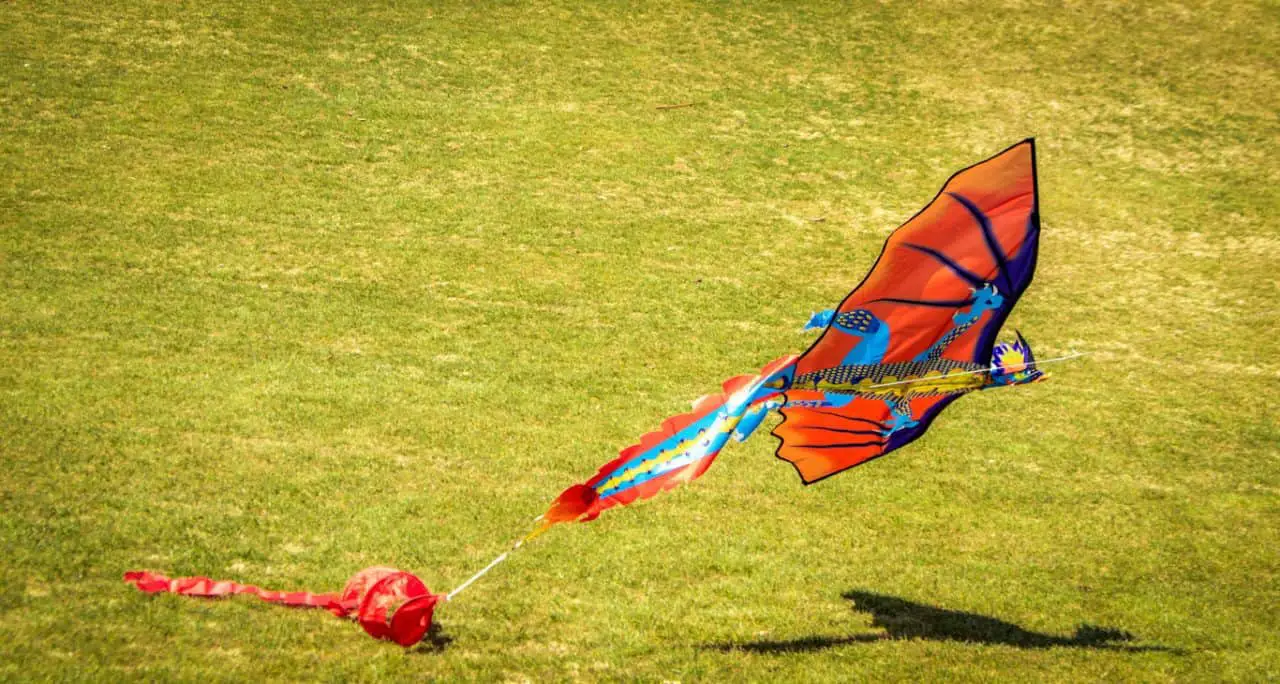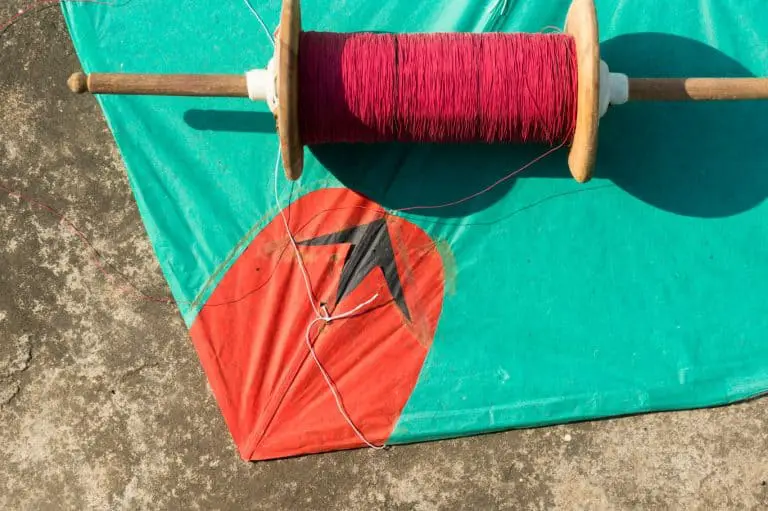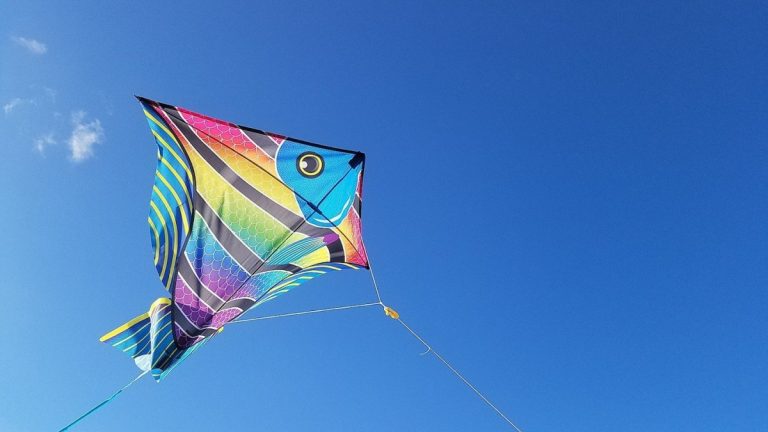4 Reasons Why Your Kite Keeps Crashing and How To Fix It
It is not always easy to figure out why a kite is crashing. So many things could be set in the wrong place, or maybe the weather is not suitable for a specific kite.
In general, kites keep crashing because they are flying with the wrong wind speed, the bridle line is not correctly adjusted, problems with the spar, lack of a kite tail which make the kite unstable, or there could be something wrong with the line used.
There is more to it. This article covers all the reasons for your kite crashing and how to resolve them.
All The Reasons For Your Kite Crashing
Although flying a kite seems pretty straightforward, at least for the most simple ones, it still requires some basic knowledge on the operator’s side to ensure it is balanced correctly and appropriate for the activity performed.
Otherwise, a kite will keep crashing in the best of the possibilities or not fly at all. Complex and big kites require more attention to the details, and it might be more challenging to isolate the reason for a crash.
Here are some of the things to troubleshoot in case your kite continues to crash:
- Wrong wind speed
- Something wrong with the bridle
- Problems with kite spar
- Flying a kite without the tail
1. Weather Conditions
Average kites can fly well in winds between 4 and 15 miles per hour. Some lightweight kites can fly in low winds, while bigger kites, such as power kites or two-liner stunt kites, require a wind over 10 mph and can fly well with winds reaching up to 20 mph.
Heavier kites need strong winds, such as 40-50 mph. Here is what type of kite you can expect to fly in different wind conditions:
- Light wind (between 2 and 12 mph): The best is to use a diamond or dragon kite in such a light breeze. They do well with winds between 2-5 mph. Light kites such as deltas, power kites, and large foils will do well if the wind is a bit stronger between 6-12 mph.
- Medium winds (between 13 and 20 mph): This is suitable for most standard kites.
- Heavy winds ( between 20 and 50 mph): sport, parafoil, and specialized kites need a higher wind speed to fly and are suitable for this wind speed range.
What Happens To Your Kite If The Wind Is Too Strong?
If the wind is too strong, your kite will pull very hard, which can break your line and cause your kite to crash. In addition, the pressure of the wind on your kite can damage it, again causing it not to fly stably and even crash.

What Happens To Your Kite If The Wind Is Too Weak?
The low wind is the most common reason for kites crashing. The only way for a kite to stay up in the air is to be supported by enough wind. Therefore, it is the first thing to verify when your kite crashes. Maybe your kite is not suitable to fly in low winds.
Or the weather conditions just changed, resulting in lower wind. It is necessary to change location or wait for the wind to come back in this case.
2. Problems With The Bridle
The bridle connects the kite with the flying line. Most kites have adjustable bridles that can be moved higher (near the top) when in the presence of higher winds or lower (toward the tail) in the presence of low winds.
In general, a knot connects the bridle with the kite line, and it is a “moving knot.” Sliding the knot up or down will allow you to adjust the bridle as needed based on the weather conditions. Sliding the knot toward the bottom of the kite reduces the kite spinning tendency.
While moving it toward the top will increase the kite spinning. It is also possible that the length of the bridle is too short on the right or the left side. In other words, the two sides are not even.
If that happens, the kite is unstable and will turn and spin to one side. In general, a knot can slide to the right or left, which allows adjustments.
3. Flying A Kite Without The Tail
Flying a kite without a tail can cause the kite to spin and roll around. It happens because of the lack of stability.
But, a tail adds stability to a kite because of the increased weight and drug to its lower end. The length of the tail can impact the kite stability differently.
In general, it is recommended to add a tail between 3 to 8 times the kite’s length. You should try different combinations to see what works best. If the tail is too small will not add enough stability to a kite, causing it to spin and roll.
A too-long tail can keep the kite stable, but its weight can prevent the kite from flying higher. In addition, if the tail is too long or too heavy, the kite might not even launch.
4. Problem With The Kite Spar
The kite spar or kite frame is instrumental to keeping stability and balance during the fly. If the structure is broken or damaged, it can cause the kite to crash. You can suspect that there is something wrong with the spars is when the kite keeps spinning in one direction before crashing.
All you have to do is repair any damaged spar, and if you find them unbalanced, you have to make sure to adjust them. In big kites, the stiffness of cross spars can cause a crashing kite.
The remedy for a stiff spar is to be sanded or handled to match the other spars.
Why Does My Kite Keep Nose Diving?
Different beginner mistakes and other factors can cause nose-diving. For example, kites are meant to go in the direction they are pointing when the line is pulled, and line pulling makes kites climb.
During the launch, it would be a mistake to continue reeling the kite because it would make it go beyond the vertical and cause it to nose-dive. Another mistake is the continuous pulling and jerking of the line whenever the nose turns downwards.
This frantic move will make the kite dive even faster. An excellent way to prevent nose-diving is to raise the bridle position or add a tail. Another way is to release the tension while the kite is diving into and regain control.
Frequently Asked Questions
Why my kite doesn’t want to fly at all?
Your kite doesn’t want to fly because there isn’t enough wind. If the wind is ok, it is possible you can’t feel the kite pulling, but you see it moving left and right without climbing.
In this case, you could have a towing point too far back, and it needs to be adjusted.
Why my kite loop around and dive into the ground?
Your kite is looping because you are trying to fly it with too strong wind. If the wind is high, you can try moving the towing point forward to reduce the pressure on the kite and keep it in the air.
Why my kite doesn’t get very high?
If your kite is not getting very high, it can be due to a low wind or a towing point set too far forward. In this case, make small adjustments to set the towing point back toward the tail and see if the problem is resolved.
Sources
- https://kitelife.com/forum/topic/9955-help-my-kite-just-crashes-to-the-ground/
- https://www.wonderopolis.org/wonder/how-much-wind-does-it-take-to-fly-a-kite#:~:text=Experts%20agree%20that%20most%20average,rustling%20leaves%20and%20waving%20flags.
- https://www.youtube.com/watch?v=RoU5hJlStFI
- https://www.my-best-kite.com/how-to-make-kites.html
- https://www.scientificamerican.com/article/bring-science-home-kite-tails/#
- https://allthingskites.com/why-a-kite-needs-a-tail/
- https://blog.kittyhawk.com/adventure/kite-flying/troubleshooting-single-line-kites/
- https://www.my-best-kite.com/towing-point.html
- http://www.wfkite.net/0013book/fly05.html







